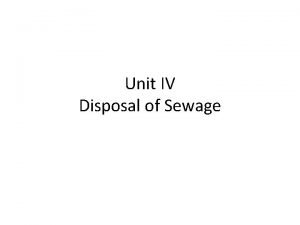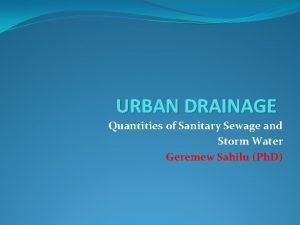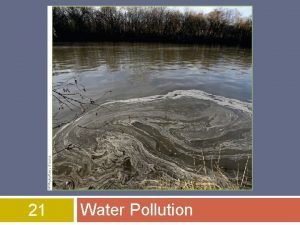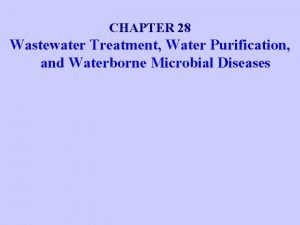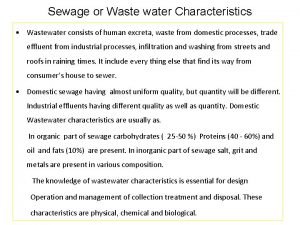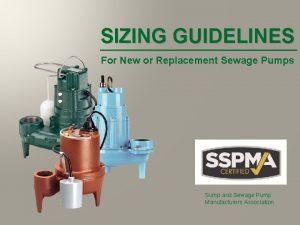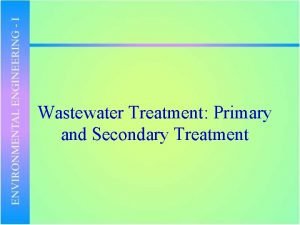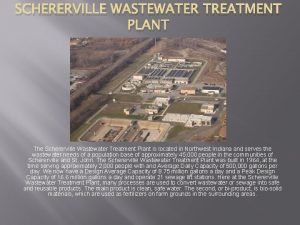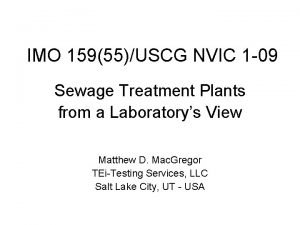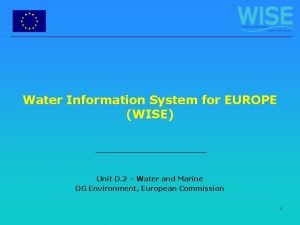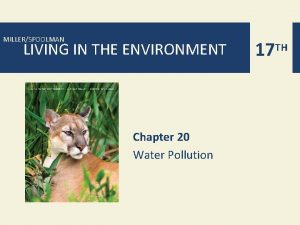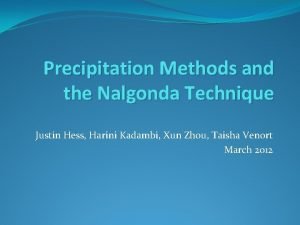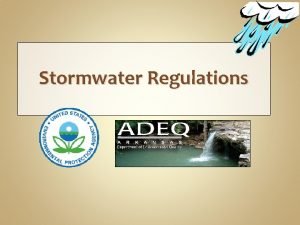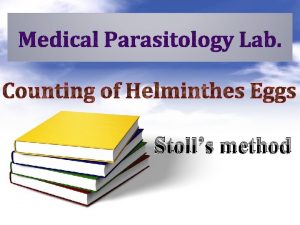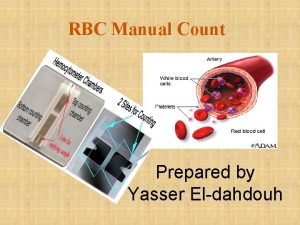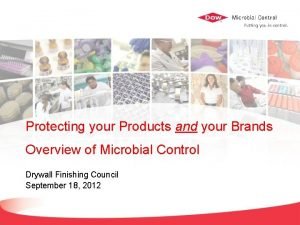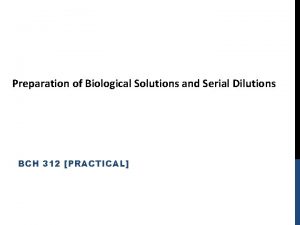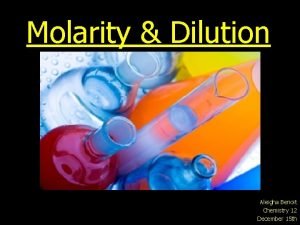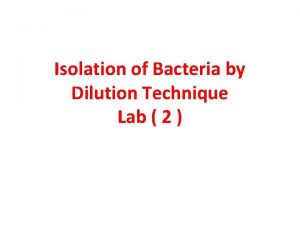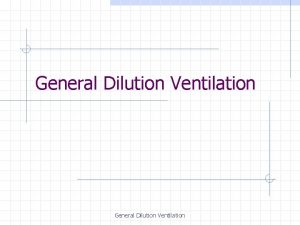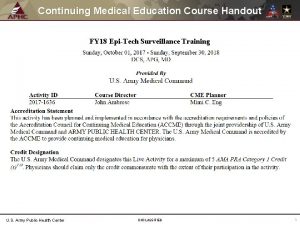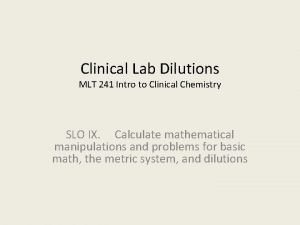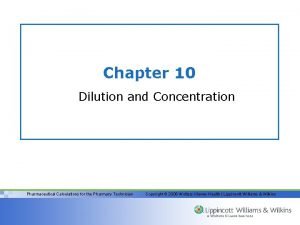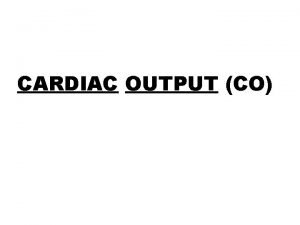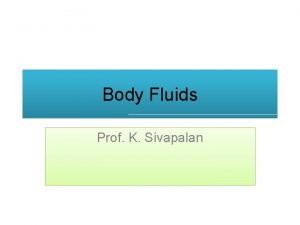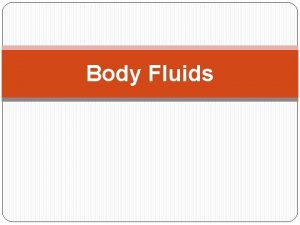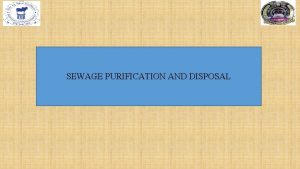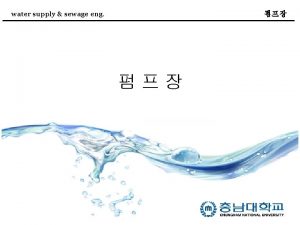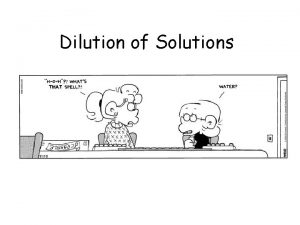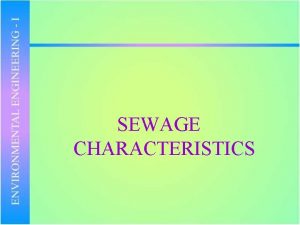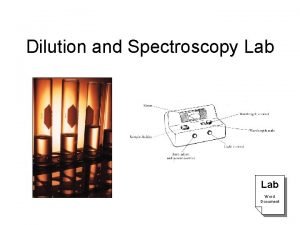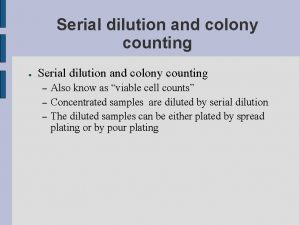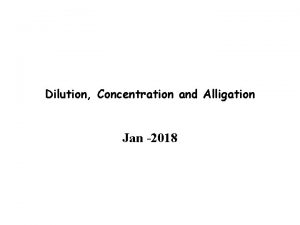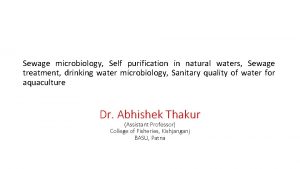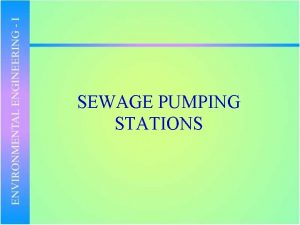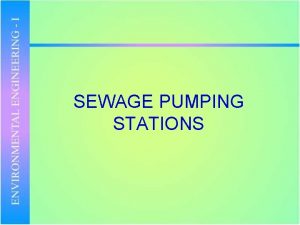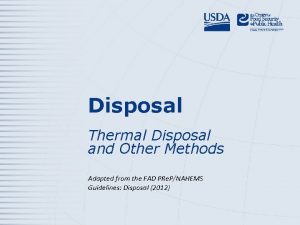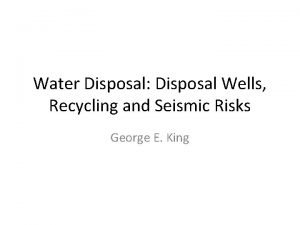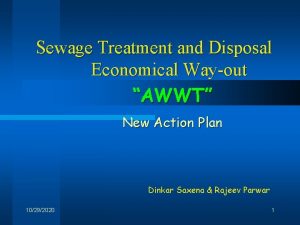Unit IV Disposal of Sewage Methods Water Dilution
















































- Slides: 48

Unit IV Disposal of Sewage

Methods • Water - Dilution • Land - Effluent irrigation or broad irrigation or sewage farming

Disposal by dilution • River stream or lake or sea • Purified in due course of time by self purification process

Conditions favouring dilution • • Sewage is fresh (4 to 5 hr old) Free from floating and settleable solids Diluting water (source of water has high DO) Diluting water not used for the purpose of navigation and water supply for some distance • Outfall sewer (sewer used for disposing sewage) is near some natural water

Dilution in Rivers and self purification The process of automatic purification of polluted water in due course of time by the stream itself which has been polluted is called as self purification process. I. Physical forces • Dilution & dispersion: When the putresible organic matter is discharged into a large volume of water contained in the river stream it gets rapidly dispersed and diluted. Such action results into the decrement in pollution concentration. • Sedimentation: Heavier settable solids settle at the river bed • Sunlight: Aquatic plants absorb sunlight and carries out the process of photosynthesis with the help of chlorophyll. Such process of photosynthesis supplies a valuable amount of O 2 to the stream i. e. increases DO content of stream.

II. Chemical and biological forces • Oxidation: The oxidation of the organic matter present in sewage effluent will start as soon as the sewage outfalls into the river water containing dissolved oxygen. The deficiency of O 2 so created will be filled by atmospheric O 2. • Reduction: Reduction occurs due to hydrolysis of organic matter settled at the bottom either chemically or biologically. Anaerobic bacteria will help in splitting the complex organic constituents of sewage into liquids and gases.

III. Other factors are • Temperature • Turbulence • Hydrography • Rate of reaeration • Amount of dissolved oxygen • Amount and type of organic matter

Oxygen Sag Curve-Streeter Phelps Equation

Zones of pollution in river Fish presence Ordinary fish like game Tolerant fishes like carp No fish present Tolerant Ordinary fishes like fish like carp game

Disposal on land Surface Irrigation 1. Free flooding





Furrow Irrigation

Sub-surface Irrigation


Sprinkler or spray irrigation


UNIT V Disposal of Sludge

Sludge Production Sludge Thickening Sludge Digestion Sludge Elutriation Sludge Dewatering Sludge Disposal

Removal of These “Pollutants” Produces “Residuals” Often called “Sludge” Settleable Suspended Dissolved Wastewater Organic Inorganic Pre Treatment Rock Grit Plastic Etc. Suspended Dissolved Primary Clarifier d u l S ge Effluent Secondary Sl Secondary Clarifier ud ge

Sludge – Residual, separated solid suspended in liquid Sludge deposited in primary sedimentation tank – Raw sludge – odourous, contains high putrescible organic matter Sludge deposited in secondary sedimentation tank/ clarifier (after trickling filter/ASP) – Secondary sludge – less objectionable Sludge need to be stabilized before disposal

Moisture Content • In addition to putrescibility, another problem is its moisture content Source of sludge Moisture Content Raw sludge 95% Secondary sludge (Trickling Filter) 96% to 98% Secondary sludge (Activated Sludge Process) 98% to 99% • High M. C sludge is bulky • 95% moisture means 5 litres of solids in 100 litres of water; 90% moisture means 10 litres of solids in 100 litres of water, i. e. , 5 litres of solids in 50 litres of water • Sludge with 90% moisture will be half in quantity compared to sludge with 95% moisture, for the same volume of solids

Sludge Thickening • Process used to increase the solids content of sludge by the separation and removal of a portion of the liquid phase. • Gravity thickening makes use of the force of gravity as the main agent in the settling and thickening process. • Reduces the operational costs of the handling and treatment of the sludge • The main reasons for thickening sludge prior to digestion are: Ø To maximise the use of the available digester capacity and reduces retention time. Ø To reduce the amount of heat required in a heated digester

1. Gravity Thickening

2. Floatation Thickening

3. Centrifugal Thickening

Sludge Digestion • Stabilization of sludge by decomposing the organic matter under controlled anaerobic conditions • 40% to 60% of organic solids are converted by bacteria into carbon dioxide and methane gases • Remaining OM is chemically stable, odourless & contain 90% to 95% moisture

Sludge broke into • Digested sludge – stable solid matter, black in colour, reduced moisture content, 1/3 rd volume, free of pathogenic bacteria - fertiliser • Supernatant liquor – liquified & finely divided solid matter, high BOD (3000 ppm) – retreated with raw sewage • Gases of decomposition – CH 4 (65 to 70%), CO 2 (30%), inert gases like NO 2, H 2 S etc – used as fuel

Sludge Digestion Tanks 1. Single stage conventional digestors

2. High rate digestor

Stages in Sludge Digestion Process • Acid Fermentation Stage : p. H<6, 15 days, high BOD • Acid Regression Stage : p. H=6. 8, 3 months, high BOD • Alkaline Fermentation Stage: p. H=7. 5, 1 month, low BOD • For complete digestion- 4. 5 months @ 21 o. C

Acid Fermentation Stage Acid Regression Stage Alkaline Fermentation Stage

Factors affecting Sludge Digestion • Temperature Ø Zone of Thermophilic Digestion Range : 40 to 600 C; Optimum : 54 o. C; 10 -15 days Ø Zone of Mesophilic Digestion Range : 25 to 400 C; Optimum : 29 o. C; 30 days • p. H value During start-up : >6. 5 Final stage : 7. 2 to 7. 4 • Seeding with digested sludge • Mixing and stirring of the raw sewage with digested sewage

Sludge Conditioning • To improve drainability • Methods are chemical conditioning (addition of chemicals like ferric and aluminium salts and lime) and elutriation (Process of washing the sludge water, to remove organic & fatty acids)

Sludge Dewatering


Mechanical Methods • Vacuum Filtration • High-speed centrifuges

Heat Drying

Disposal of Sludge • • Dumping into sea Burial into trenches Incineration Lagoons (without digestion)

Land disposal


Incineration • Combustion of sludge at high temperature to form ash 1. Multiple Hearth Incinerator

2. Fluidized bed Incinerators

3. Infra-red furnace

Lagoons

 Site:slidetodoc.com
Site:slidetodoc.com Dilution factor formula
Dilution factor formula Disposal by dilution
Disposal by dilution Sewage and storm water estimation
Sewage and storm water estimation Ce certification electric water pump design
Ce certification electric water pump design Water treated from sewage treatment plant
Water treated from sewage treatment plant Sewage water
Sewage water Water and water and water water
Water and water and water water Plant assets natural resources and intangible assets中文
Plant assets natural resources and intangible assets中文 Grit chamber in sewage treatment plant
Grit chamber in sewage treatment plant Sewage treatment primary secondary and tertiary
Sewage treatment primary secondary and tertiary Sewage cleanup hanahan
Sewage cleanup hanahan Characteristics of sewage
Characteristics of sewage Difference between conservancy and water carriage system
Difference between conservancy and water carriage system Ce certification water treatment
Ce certification water treatment Sewage pump size calculator
Sewage pump size calculator Sewage sickness
Sewage sickness Primary settling
Primary settling Local guide program
Local guide program Conclusion of sewage treatment
Conclusion of sewage treatment Unit 11 water water everywhere
Unit 11 water water everywhere Fabrication of wax pattern
Fabrication of wax pattern Unit 10, unit 10 review tests, unit 10 general test
Unit 10, unit 10 review tests, unit 10 general test How to reduce water pollution
How to reduce water pollution Nalgonda technique steps
Nalgonda technique steps Botox map face
Botox map face Sni 03-6572-2001
Sni 03-6572-2001 What does dilution is the solution to pollution mean
What does dilution is the solution to pollution mean Modified stoll's technique
Modified stoll's technique Type of dilution
Type of dilution Dilution formula
Dilution formula Rbc count principle
Rbc count principle Dilution plating
Dilution plating How to make a serial dilution
How to make a serial dilution Dilution equation
Dilution equation Table de mac grady pour 2 tubes par dilution
Table de mac grady pour 2 tubes par dilution Isolation of bacteria by dilution techniques
Isolation of bacteria by dilution techniques Dilution method
Dilution method Dilution ventilation formula
Dilution ventilation formula Serial dilution factor
Serial dilution factor Titer dilution
Titer dilution 1/2 dilution
1/2 dilution Ostwald dilution law
Ostwald dilution law Dilution calculations pharmacy
Dilution calculations pharmacy Stroke volume normal
Stroke volume normal Indicator dilution principle
Indicator dilution principle Isosmotic volume contraction
Isosmotic volume contraction Facteur de dilution
Facteur de dilution Antistreptolysin o screen
Antistreptolysin o screen


